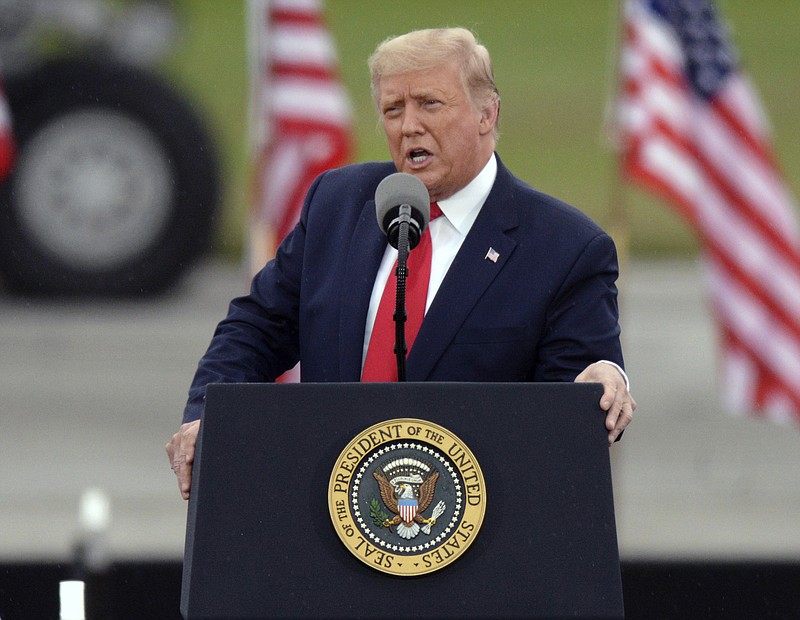WASHINGTON -- President Donald Trump is expanding his arsenal of spectacular, but hard to explain, claims about U.S. military might.
First, there were invisible airplanes. Then, a "super duper" missile.
And now, a secret nuclear weapon.
"I have built a nuclear, a weapon, I have built a weapon system that nobody's ever had in this country before," Trump said in an interview with journalist Bob Woodward for his book published this past week.
"We have stuff that you haven't even seen or heard about. We have stuff that Putin and Xi have never heard about before," Trump said, referring to Presidents Vladimir Putin of Russia and Xi Jinping of China. "There's nobody. What we have is incredible."
Weapons experts are puzzling over Trump's words. Some think he may have been talking about a nuclear warhead that was modified to reduce its explosive power. Known as the W76-2, the weapon certainly is unknown to the general public -- not because of secrecy or mystery but because of its obscurity.
Asked by a reporter to clarify his comment, Trump on Thursday said he'd rather not.
"There are systems that nobody knows about, including you, and we have some systems that nobody knows about. And, frankly, I think I'm better off keeping it that way," he said.
James Acton, a nuclear expert at the Carnegie Endowment for International Peace, said in an interview Friday that Trump may have been referring to the W76-2 warhead. Although its existence was not a secret, the timing of its first deployment was. The warhead is on the business end of a Trident II D-5 missile carried aboard Navy ballistic missile submarines.
"The timing matches up," Acton said.
The Woodward interview was Dec. 5, around the time of the first W76-2 deployment, which was not announced publicly until Feb. 4. The weapon itself is not revolutionary. It's not even the only low-yield warhead in the U.S. arsenal. It is, however, the first major addition to the strategic nuclear force in recent decades and is a departure from the Obama administration's policy of lessening dependence on nuclear weapons. Joe Biden, Trump's rival for the White House, has said the new weapon is overkill.
Acton says Trump may well have been making a garbled reference to some other weapon.
"It's clear that the president likes boasting about military capabilities and doesn't always have the tightest grasp on the details," he said.
It cannot be ruled out that the U.S. is developing a new nuclear weapon in secrecy. That seems unlikely, however, for two reasons -- the cost would be too much for the classified, nonpublic portion of the budget, and too many people would be involved in the project for it to stay secret for long.
Trump occasionally mentions his interest in hypersonic weapons, sometimes without using the term. Details of these weapons' planned capabilities are mostly classified. In February, Trump said: "We have the super-fast missiles -- tremendous number of the super-fast. We call them 'super-fast,' where they're four, five, six and even seven times faster than an ordinary missile. We need that because, again, Russia has some."
And in May, he said: "We have no choice, we have to do it, with the adversaries we have out there," mentioning China and Russia. He added, "I call it the super-duper missile." He said he "heard" it travels 17 times faster than any other U.S. missile.
A hypersonic weapon is one that flies at speeds in excess of Mach 5, or five times the speed of sound. Most American missiles, such as those launched from aircraft to hit other aircraft or ground targets, travel between Mach 1 and Mach 5, although the Minuteman 3 intercontinental ballistic missile, which has operated for decades, can reach hypersonic speeds.

